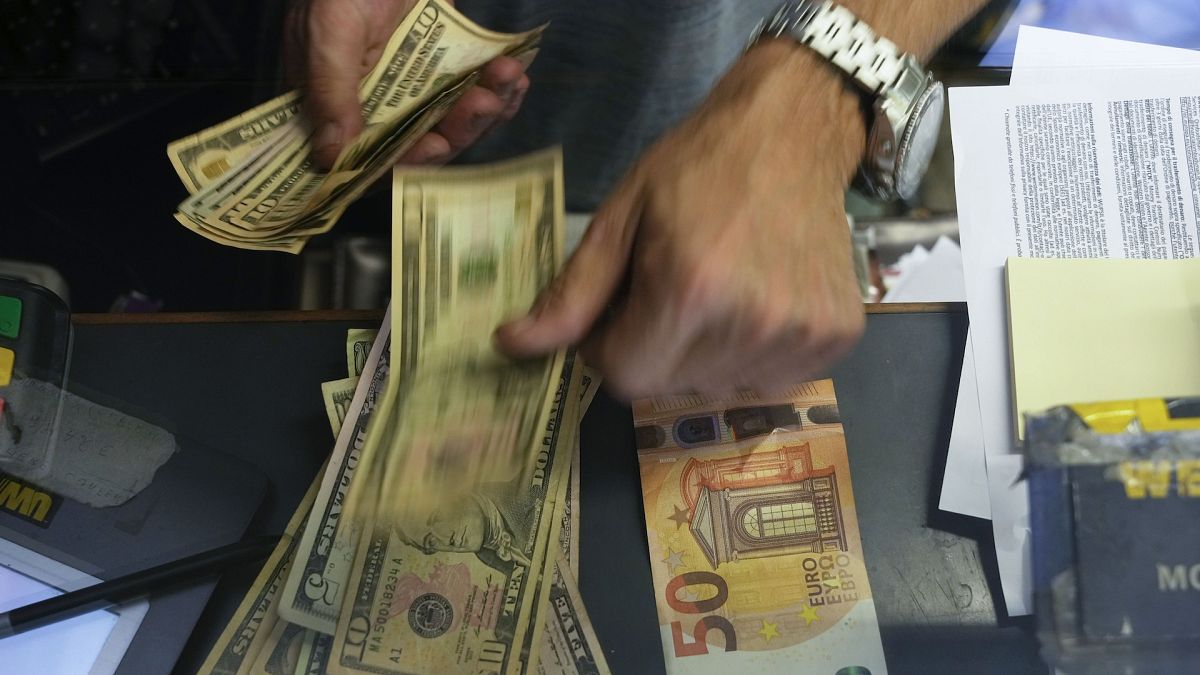The euro stabilised against the US dollar on Tuesday, despite more tariff threats from US President-elect Donald Trump, targeting imports from Canada and Mexico.
US President-elect Donald Trump said on Truth Social media that he would impose tariffs of 25% on imports from Canada and Mexico. Both the Canadian dollar and Mexican Peso plunged against the dollar to multi-year low levels amid the news.
Analysts expect the new tariff vows may kick-start trade negotiations between the US and its trading partners and is likely to spark widespread currency market volatilities in the coming months.
The euro fell initially before cutting losses against the dollar and ended the session flat on Tuesday. It saw little change and steadied at just under 1.05 in the early Asian session on Wednesday.
However, the single currency experienced a significant decline against the dollar, plunging to a two-year low of 1.0330 last Friday, depreciating by 6 US cents against one euro since 5 November when Trump won the US election. And it is likely to face further pressure amid the current global economic and political dynamics.
The euro likely to extend weakness against the dollar
Several factors could continue pressuring the euro against the dollar. First of all, Trump’s tariff threat may encourage hedging actions of trading partners – exchanging local currencies for the king dollar – to offset further devaluation in assets. This shift would heighten demand for the greenback, adding downward pressure on the euro.
Secondly, the Federal Reserve released its meeting minutes showing that officials prefer a gradual approach to cutting rates against a resilient economic backdrop. Some officials even indicated that the bank would pause rate cuts if inflation pressure persists. The hawkish stance is likely to continue driving down the euro against the dollar.
Third, the euro lacks fundamentals to counter the dollar’s momentum. On Tuesday, European car sector stocks were hit by Trump’s fresh tariff threats. Sentiment soured across the continent, with all major equity benchmarks ending lower.
Trump said in this presidential campaign that he would impose 10% tariffs on imports from all other countries and 60% on China. Should these tariffs materialise, the euro may need to weaken further to support European exporters. Additionally, China’s exposure to US tariffs could dampen its demand for European goods, indirectly affecting the eurozone economy.
Kyle Rodda, a senior market analyst from Capital.com warned of potential further weakness in the euro: “If we continue to track as we are and there’s follow through from the Trump administration on tariffs, then I suspect the euro and yuan to keep weakening, especially given that it’s only a matter of time before Trump posts something aggressive on social media about a major European economy or China once again.”
Near-term rebounding opportunities
Markets are awaiting the release of the eurozone’s flash Consumer Price Index (CPI) for November on Thursday, which is expected to rise to 2.3% from October’s 2%. Higher inflation could prompt a more hawkish stance from the European Central Bank (ECB), offering some support to the euro.
US government bond yields have retreated from a four-month high following Trump’s nomination of hedge fund executive Scott Bessent as Treasury Secretary. Bessent is seen as less aggressive on tariffs, potentially easing global trade tensions. A slowdown in dollar strength could offer a temporary reprieve for the euro, as currency trends often positively correlate with bond yields.
Checkout latest world news below links :
World News || Latest News || U.S. News
The post Euro holds steady despite Trump’s renewed threats on tariffs appeared first on WorldNewsEra.

